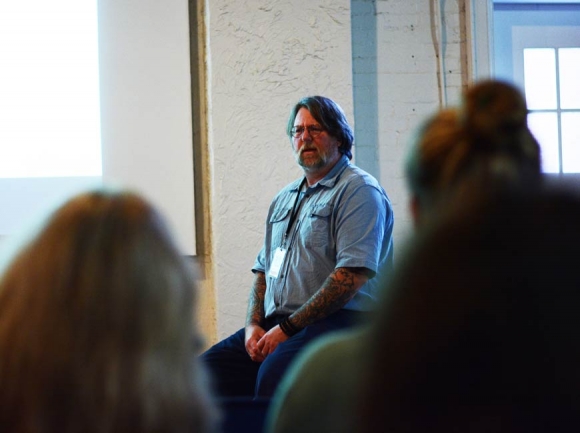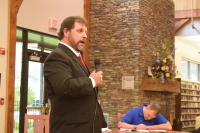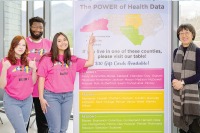It’s OK to not be OK: Suicide prevention takes center stage at Folkmoot
 Suicide prevention trainer Bob Cummings speaks to a group of about 25 at Folkmoot Sept. 10. Holly Kays photo
Suicide prevention trainer Bob Cummings speaks to a group of about 25 at Folkmoot Sept. 10. Holly Kays photo
Imagine this — you’re atop a hundred-story building, and it’s on fire. As the flames and smoke close in, you really don’t want to jump, but there simply doesn’t seem to be any other way.
That’s how many people contemplating suicide see the situation, according to Bob Cummings, a peer suicide prevention trainer with Red Oak Recovery.
Cummings spoke to a crowd of almost 30 at Folkmoot Sept. 10, training the group on a method of peer-oriented suicide prevention called QPR.
Globally, 800,000 people choose to end their lives each year, more than 90 every hour of every day. In the time it takes you to read this story, another 10 will have completed the act. In the United States alone that breaks down to about 45,000 preventable deaths each year, mostly among men aged 35 to 65.
Suicidal people, Cummings explained, begin offering hints as much as a week in advance. Those hints could be direct, or not; they could be statements, or actions; they could be situationally triggered, or manifestations of chronic issues. QPR teaches non-clinicians how to recognize the red flags and respond.
The ‘Q’ in QPR stands for question. What that means is, when the frequency or severity of red flags reaches an alarming level, ask the question in a direct manner — are you thinking of suicide?
Related Items
This can often be the hardest step — the stigma that envelops mental illness and substance abuse extends to self-harm, with even highly-trained professionals sometimes struggling even to utter the word.
According to Cummings, a recovering addict who lost his brother to drug-related suicide, President Gerald Ford’s wife Betty played a huge role in de-stigmatizing addiction in the late 1970s when it was revealed she was an alcoholic addicted to opiates.
That stigma still surrounds the cultural taboo of suicide, but watering it down doesn’t help, either.
“If you say something like, ‘Are you thinking of hurting yourself?’ in my experience that answer is, ‘Nope, won’t hurt a bit when I swallow these pills, or when I shoot myself,’” said Cummings.
The ‘P’ stands for persuade — demonstrating a willingness to listen often helps, but the idea is to ensure that a permanent solution to a temporary problem does not occur.
Whether or not there’s self-harm imminent, the ‘R’ in QPR stands for refer, as in to a higher level of care, be it emergency personnel, a friend, a family member or a spiritual leader.
The point of it all, said Cummings, is that suicide is preventable when people are prepared to intervene, and are able to push past politeness and stigma to ask the hard questions.
“People need to know,” he said, “that it’s OK to not be OK.”









